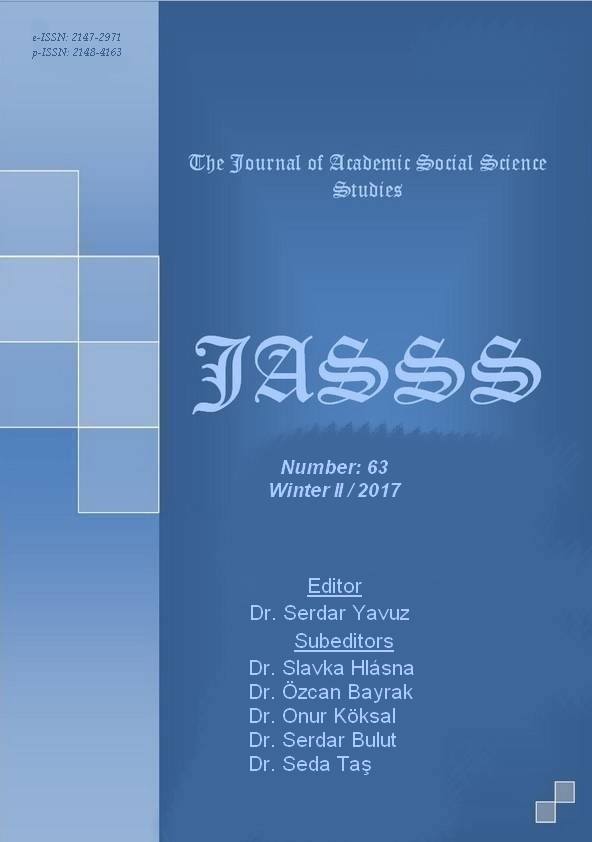NİSÂ 34. AYETİ BAĞLAMINDA KADIN-ERKEK ÜSTÜNLÜĞÜ OLGUSUNUN GELENEKSEL VE MODERN YORUMU (İLK DÖNEM BAZITEFSİRLERLE TEFSİRÜ’L-MENÂR ARASINDA BİR MUKAYESE)
Author :
Abstract
Bu araştırmada, Nisâ 34. ayeti çerçevesinde kadın-erkek eşitliği ya da üstünlüğünün geleneksel ve modern tefsir yorumu, mukayeseli olarak ele alınmaya çalışılacaktır. Kavvam, nüşûz, darb gibi anahtar kavramlar ihtiva etmesi sebebiyle bu ayet, konuyla ilgili yorum ve değerlendirmelerde öne çıkmaktadır. Bu üç kavramdan hareketle geleneksel ve modern dönem müfessirlerin erkeğin faziletiyle ilgili ortaya koydukları gerekçelerin, Kur’ân yorumundaki yeri ve değeri üzerinde durulmaktadır. Araştırmada, geleneksel yorumu temsilen Tâberî, Râzî, Zemahşerî, Kurtûbî ve Ebû Hayyân gibi tefsir alanında önemli şahsiyetlerin; modern yorumu temsilen de bu dönemin en önemli iki şahsiyeti olan Muhammed Abdûh ve öğrencisi Reşid Rıza’nın fikirleri esas alınmakla birlikte zaman zaman diğer müfessirlerin görüşlerine de yer verilmektedir. Nisâ suresi 34. ayetle ilgili klasik ve modern dönem tefsir yorumlarının şekillenmesinde, birden fazla faktör etkili olmaktadır. Özellikle bazı klasik tefsirlerde erkeğin kadın karşısındaki üstünlüğünün varoluşsal (zatî) gerekçelerle izah edilmesinde, müfessirin kişisel anlayışının ve ön kabullerinin etkili olduğu anlaşılmaktadır. Örneğin klasik dönem önemli müfessirlerden İbn Kesir (ö.774/1373)’in “Erkek kadından zatı itibariyle (bi nefsihi) üstündür.” ifadesi bu iddiayı teyit etmektedir. Dolayısıyla ayette yer alan kavvamûn, nüşûz, darb gibi anahtar kavramlar doğrultusunda yapılan spesifik yorumlar analiz edilirken, müfessirin esas aldığı yöntemin ve sosyo-kültürel yaşam biçiminin göz ardı edilmemesi gerekmektedir. Böylece modernist ve seküler çevrelerce İslam dünyasındaki erkek egemen yaşam biçiminden kaynaklanan olumsuz bazı sonuçların, Kur’ân metnine dayandırma çabalarının önüne geçmek mümkün olacaktır.
Keywords
Abstract
In this article, the traditional and modern tafsir interpretation of equality or superiority between men and women will be examined comparatively in the context of the 34th verse of Nisa. The key concepts such as nushûz, qiwâma, darb take place in this verse is the main factor that brings it forward in the interpretations and evaluations related to the subject. The reasons put forward about the virtue of the man through this three concepts will be investigated in the place and value of the interpretation of the Qur'an. İn this research, representing traditional interpretation, the thoughts of important personages in the field of tafsir Tâberî, Râzî, Zamahshari, Kurtûbî and Abu Hayyan, and representing traditional interpretation, the thoughts of the two most important personalities of this period Muhammad Abdûh and his student Rashid Riza will be taken basis as well as other of mufassirs. Many factors are influential in shaping of classical and modern interpretations of the verse. Especially in some classical tafsirs, it is understood that the personal understanding and the pre-acceptance of the mufassir are influential in explaining the supremacy of man in terms of existential (zatî) reasons. For example, Ibn Kathir’s expression, "The man is supremacy than woman ontologically." is confirms this iddea. Therefore, it should not be ignored that the method and socio-cultural life style of the commentator while analyzing the specific interpretations in the direction of the key concepts such as kavvamûn, nüşûz, darb, which take place at the verse. Thus, ıt will be possible to prevent efforts of modernist and secular circles to establis between the text of the Qur'an and some negative consequences which caused from the man-dominated way of life in the Islamic World.





